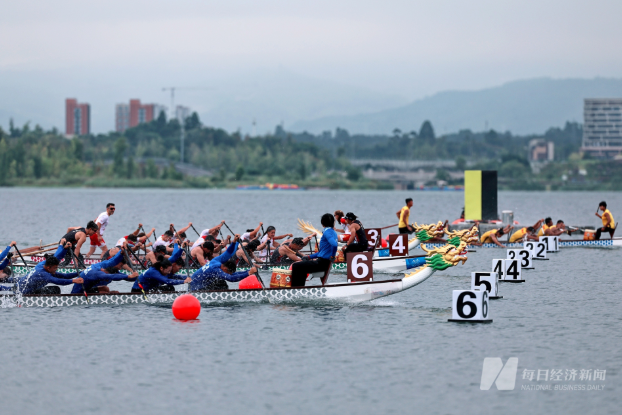
Photo/Zhang Jian (NBD)
The dragon boat competition at the Chengdu World Games closed on August 10, marking a historic first. This traditional Chinese sport, rooted in ancient customs, debuted as an official World Games event, bringing the spectacle of racing boats to a modern sports stage.
Dragon boating is rapidly evolving from a cultural festival into a global sport. The International Dragon Boat Federation has nearly 90 member countries and regions, with 50 million enthusiasts worldwide. This sport is a vibrant intersection of athletics, urban culture, and modern commerce, creating new economic growth from equipment manufacturing to tourism.
A Traditional Sport Boosts Urban Culture
The sport's continuation is a testament to the prosperity of water cities.
On May 31, Hu Songyang, a member of a local dragon boat team, raced in Chengdu's Xinjin district, an area famous for its thousand-year history of the sport. "We've had this tradition since we were kids," Hu said. His team trained for weeks, embodying the spirit of teamwork and perseverance. "This sport gives us a sense of moving ahead and the belief in working together."
The appeal is now global. Tanguy Gilbert, a French tourist, experienced dragon boating for the first time in Xinjin. "It was hard work, but I loved it," he said, noting the difference from sports like sailing.

Hu Songyang Photo/Wang Haoyi (NBD)
The "Dragon Boat Economy" Spurs Consumption
The "Dragon Boat Economy" is booming in China. This year, over 120 dragon boat events attracted more than 5.7 million participants. This "sport-plus-business" model, which includes cultural tours and merchandise, is driving new consumption. A festival in Hangzhou, for instance, generated 7.78 billion yuan in consumption.
This popularity is also fueling the manufacturing industry. Over 970 dragon boat companies exist in China, with Miluo, Hunan, producing 60% of the country's boats. This industry, valued at 250 million yuan, employs over 3,000 people.
Modern dragon boat manufacturing blends traditional craftsmanship with new technology. Artisans still hand-carve the intricate "dragon head" and assemble the boat without nails. However, modern techniques like CNC carving and materials such as fiberglass and carbon fiber are now used to create lighter, more durable boats, preserving the traditional aesthetic while enhancing performance.


 川公网安备 51019002001991号
川公网安备 51019002001991号





